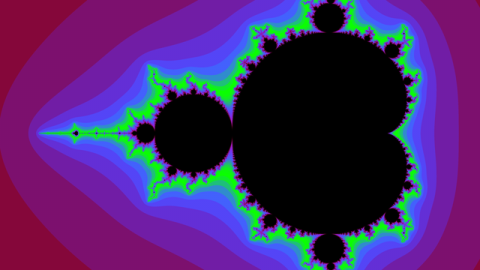Mathematician Benoit Mandelbrot

Benoit Mandelbrot, who passed away on October 14th at the age of 85, “was one of the most visionary mathematicians from the latter part of the twentieth century,” Boston University professor Robert L. Devaney tells Big Think:
While Mandelbrot made numerous contributions in many different areas of science, engineering, and mathematics over the years, two of his breakthroughs have had a profound impact. The first was his recognition that the geometry of nature is fractal geometry, not Euclidean geometry. Fractals are objects that are self-similar — as you zoom in on such an object, the same structure reappears over and over. Think of trees, with their trunks, large limbs, smaller limbs, branches, smaller branches, twigs, and so on. Look around you — more or less everything from nature has a fractal structure, while the things humans build involve rectangles, circles, triangles, and the like. As Mandelbrot said in his influential book The Fractal Geometry of Nature, “Clouds are not spheres, mountains are not cones, coastlines are not circles, and bark is not smooth, nor does lightning travel in a straight line.”
Mandelbrot’s second major contribution was the discovery of the object now known as the Mandelbrot set. Mandelbrot’s uncle, Szolem Mandelbrojt, had many years before urged him to look into the research of some famous French mathematicians from the 1910s, Gaston Julia and Perre Fatou, that involved iteration of complex functions. Since the objects encountered in this field are extremely complicated, nobody back then could visualize them since they had no access to computers. In 1979, while he was at the IBM Watson Research Lab, Mandelbrot became one of the first mathematicians to use a computer to investigate these ideas. He immediately came up with the picture now known as the Mandelbrot set. Arising from the simple process of iterating a simple quadratic expression in the complex plane, this object turned this area of mathematics on its head. Not only is this set incredibly beautiful, but it has allowed many mathematicians to come to grips with the phenomenon called chaos. And, like his work with fractal geometry, this area of mathematics has also become very accessible and interesting to the general public.
In his Big Think interview earlier this year, Mandelbrot said that he first began the work that led to the birth of fractal geometry, there was “an explosion of interest” from his colleagues he told us: “Everybody in mathematics had given up for 100 years or 200 years the idea that you could … from looking at pictures, find new ideas. That was the case long ago in the Middle Ages, in the Renaissance, in later periods, but by then mathematicians had become very abstract.” By contrast, the complex mathematical shapes called fractals were not only available to the senses, they were downright beautiful.
The shapes didn’t just turn mathematicians’ heads, either, Mandelbrot recounted. Fractals have become beloved by non-mathematicians around the world, to the point of entering the popular culture. There is now not just one but a whole genre of “fractal nightclubs” (he doesn’t know what kind of clubs they are, but says he has a guess), as well as a popular rock song named after the most famous fractal of all, the Mandelbrot set.
Mandelbrot admitted, however, that while he may have been the first to discover the mathematics behind the rough, self-similar shapes known as fractals, he was by no means the first to notice their prevalence in nature. As he points out, fractals have had a long distinguished history of appearing in the works of great artists, from the French landscape painter Poussin to the Japanese master Hokusai. And as you might expect, modern digital artists are now doing them one better: through the power of fractal equations, for example, computers can now generate clouds so photorealistic, they’re indistinguishable from the real thing.
Thomas Banchoff, a professor of Mathematics at Brown University and president of the Mathematical Association of America from 1999-2000 tells Big Think that Mandelbrot was “a remarkable presence in the mathematical world for many years and he will definitely be missed.”




